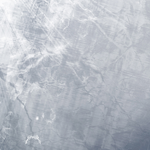 Adobe Community
Adobe Community
Bitmap images print pixelated
Copy link to clipboard
Copied
I am creating a booklet using InDesign made up of images from Photoshop. All images have been converted to 600dpi BMP files. These print nicely in Photoshop, but come out slightly pixelated when printing either directly from InDesign or when exported to a PDF.
Example from Photoshop:
Example from InDesign:
Copy link to clipboard
Copied
I have also either downscaled to 600dpi before printing (using bicubic sharper) or scanned at 600dpi and used that.
Copy link to clipboard
Copied
I still don't understand why the images print fine from Photoshop but not InDesign (plus, the PDF from InDesign is also pixelated). I don't think it's been addressed here yet (unless I've missed it).
Next questions (just to understand if the pixelation issue is related to InDesign or something else):
-Did you try to export to PDF from Photoshop using the same settings you're using in InDesign (I don't think you ever mentioned it). If so, will such a PDF be any different than the one exported from InDesign?
-As a test, try to place the same image in Illustrator, then print and export to PDF using the same settings. What will the results be?
I also don't think you ever confirmed that you're using the Send Data > All option when printing from InDesign:
Copy link to clipboard
Copied
Copy link to clipboard
Copied
I touched on in in my arm-waving: Photoshop integrally does all the detail work I am noting, InDesign does not. ID assumes if you want Black + White, by gosh, you'll get Black plus White. Photoshop is older and wiser.
┋┊ InDesign to Kindle (& EPUB): A Professional Guide, v3.1 ┊ (Amazon) ┊┋
Copy link to clipboard
Copied
I did save as a PDF from PS and got the same result. I am also getting pixelation when I print from Illustrator. And Send Data: All is selected.
Copy link to clipboard
Copied
I can understand converting to grayscale, but why bother to convert to bitmap?
Copy link to clipboard
Copied
Grayscale will be screened at the printing screen, e.g. 150 LPI. Bitmap mode/line art is not.
Copy link to clipboard
Copied
"Yeahbut," as an annoying colleague of mine is prone to say, and if I can kick this dead horse one more time — you're again comparing technicalities that may not reflect real world results.
An optimized and fairly high res grayscale image, processed for print through optmized screening, even 150lpi, is likely to produce a more acceptable result to most eyes from most 600dpi and down devices. That the dots are technically coarser is irrelevant.
A very high res B+W image, passed through export without change, is subject to the whims and quality of the printing device, and at 600dpi it's likely to still have some jaggies, and thus look inferior to the above approach.
All based on experience that I've never had good results from black line art on anything less than 1200dpi and up output devices; applying the "smoothing" at earlier stages, no matter how numerically inferior, gave a better result.
Somebody get this horse outta here. 🙂
┋┊ InDesign to Kindle (& EPUB): A Professional Guide, v3.1 ┊ (Amazon) ┊┋
Copy link to clipboard
Copied
I think if there was one fundamental wrong turn in all this, it was converting/saving as bitmap/BMP with the idea that an absolute B/W file and smaller size were desirable.
A color model with more depth would preserve the slight shading I am pointing out is all but inevitable, and in grayscale, would not be a very large file.
I'd pretty much say bitmap, indexed color, BMP etc. should never be used in InDesign, even for small, simple icons and the like. Cetainly not for larger illustrrations or for print.
┋┊ InDesign to Kindle (& EPUB): A Professional Guide, v3.1 ┊ (Amazon) ┊┋
Copy link to clipboard
Copied
I'm curious what the ideal prep in PS for printing line-art would be? Apart from converting to bitmap mode or saving as a BMP file, I am using levels to adjust contrast and threshold. Would either of those steps be wrong, or is there some step I might be missing?
Copy link to clipboard
Copied
Okay, chiming in here.
1. nothing wrong with BMP format, as long as you are saving this as a 1-bit BMP. That being said, yes, it's an old format so I would rather see 1-bit TIFFs in this case. Plus, you can save 1-bit TIFFs with LZW to save oodles of drive space.
2. If you are printing from InDesign directly, there are a few places, that by default, InDesign sets a "compromise".
Under Graphics, ID defaults to Optimized Subsampling. Use "All" instead; this sends the complete image data no matter how large it is. When optimized is set, ID will send a reduced resolution version based on the final resolution of your printer.
For non-PS printers, under Advanced, ID defaults to Print as Bitmap > 300 dpi, so again, it's downsampling, even though your Brother has a native 600. For Color/Greyscale images this isn't a probem, but for line art, will increase edge jagginess that the naked eye can pick up.
3. As for printing from your PDF, your Export setting shouldn't be affecting anything; you have properly turned off downsampling on monochrome images. To check, If you zoom in on the image in your PDF, does the image show the degradation there? If not, your issue is downstream (i.e. printer/printer settings).
4. If your line art images are interacting with any transparency opbjects in ID, you need to check your Transpareny Flattening settings and chnage them accordingly.
Copy link to clipboard
Copied
I feel like I've checked all of these boxes, and I'm still having the same issue.
Copy link to clipboard
Copied
The pdf does not look smooth when zoomed in. I adjusted the Transparency Flattening setting to be High Resolution.
Copy link to clipboard
Copied
I have the feeling that any reasonable goal has been lost in all this search for a perfect solution. So I gotta ask: are you going to provide a magnifying glass to each reader of this document? 🙂
┋┊ InDesign to Kindle (& EPUB): A Professional Guide, v3.1 ┊ (Amazon) ┊┋
Copy link to clipboard
Copied
I received the file from Jason @Jason28603059yx35
It was a 1200 ppi RGB TIFF. He also sent one he process and downsampled to 600 ppi, but I used the original scan.
(I don't know if it was scanned at 1200 or upres'd to 1200, but it was 1200 ppi.)
First, the original art was hand-drawn so the lines were "shaky" to begin with. Original from Photoshop screen capture:
I processed the file three ways after increasing the contrast with levels a bit.
- RGB with LZW compression. (LZW is lossless)
- Grayscale with LZW compression.
- Bitmap Mode with LZW compression.
I placed them in InDesign and printed them, sending All data. (I had to take a close-up photo with my phone since my scanner did not allow that much scaling, so you are seeing the paper texture.) The color and grayscale were identical under a loop and both looked soft a actual size compared to the line art version. As I mentioned, they would be screened at the printers linescreen, and it shows on the image. (My printer is also a 600 dpi so I believe it prints at 170 lpi.)
Line art (Bitmap mode from Photoshop using 50% dither) printed from InDesign:
You can see that there is no screening and a definite improvement vs the color/gs.
I stand by my original settings on scanning/printing line art.
Copy link to clipboard
Copied
BTW, not that file size should be a deciding factor over quality, but the sizes were as follows:
- Original RGB, 66.9 MBs
- LZW RGB, 22.1 MBs
- LZW GS, 9.4 MBs
- LZW BM mode, 0.19 MB
Again, LZW is lossless. Although it can take a little longer to print since it has to decompress at that time, but I don't think this has been a major issue for 30+ years.
Copy link to clipboard
Copied
Based on that, do you think there is an issue with my InDesign settings? Similar to you, I did achieve a better result with a TIFF in bitmap mode saved with LZW compression, but it still was visibly pixelated compared with when I printed directly from Photoshop.
Copy link to clipboard
Copied
Be sure to change your Graphics setting during printing to Send Data: All. See if that helps.
If not, try printing on someone else's printer. See if it's just your printer.
Copy link to clipboard
Copied
I think I'll try someone else's printer.
-
- 1
- 2










